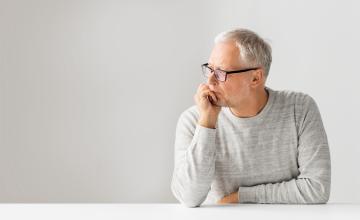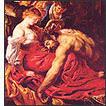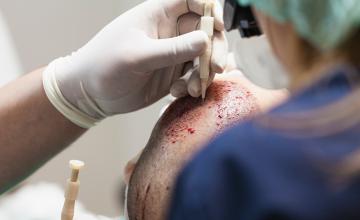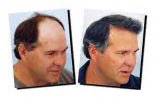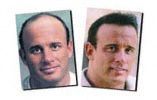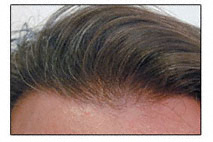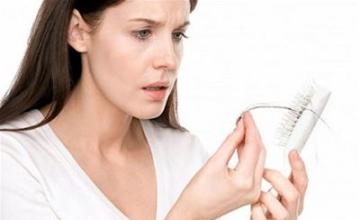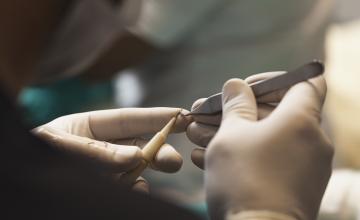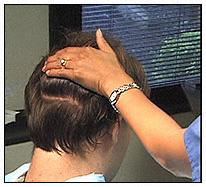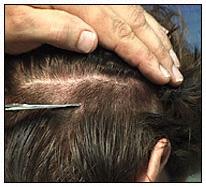From big wigs to surgical hair restoration

The Era of the big Wig
Soon after the Middle Ages wigs became popular for women. Then in the 1600’s the flamboyant and incredibly vain King Louis XIV of France lost his hair from a severe illness and took to wearing gigantic wigs thus setting the fashion for most men of his day.
These enormous creations featured such items as cages with live birds and could weigh up to 20 lbs.!
By the 1700’s England made another contribution to bad hair loss concealers. This was the age of the long, curly, and powered wigs. Even today, English judges and lawyers continue this practice. Thus the expression for those in authority – “Big Wigs.”
The“Snake oil” Years
The early 1800’s is renowned in hair loss circles as the age of the con men. There were hundreds of so-called “hair loss solutions” and many lasted well into the late 1900’s.
These treatments were marketed by fast-talking “doctors,” skilled only in bravery and possessing nerves of steel considering they were conning hardened cowboys and outlaws!
The salesmen hawked their products from the safety of their side shows and “Wild West” spectaculars. They used endless tricks to get people to buy their products, including rubbing grease into their hair to make it look thicker.
The “Modern” Era of Hair Loss Solutions
During the past several decades, superstition, old wives tales, and guess work has gradually been replaced by science.
In 1939, a Japanese dermatologist, Dr. Okuda, published a revolutionary method in a Japanese medical journal that would lay the ground work for modern hair transplantation.
This method involved using hair transplant grafts to correct lost hair from various areas, including the scalp, eyebrow, and moustache areas. However, this study didn’t make an impact in the Western Hemisphere due to the interruption of World War II.
Hair transplants are born.
In the late 50’s one physician in particular, Dr. Norman Orentriech, began to experiment with the idea of relocating or transplanting the hair on the back and sides of the head to the balding areas.
Dr. Orentriech’s experiments showed that when bald resistant hairs from the back and sides of the head were relocated, they maintained their bald resistant genetic characteristic regardless of where they were transplanted.
This principle, known as “Donor Dominance”, established that hair could be transplanted from the bald resistant donor areas to the balding areas and continues to grow for a life time. This laid the foundation for modern hair transplantation.
During the 60’s and 70’s surgical hair restoration grew in popularity. However, the standard procedure used large grafts that were removed by round punches and often contained many hairs.
Completed Result after Multiple Sessions of Large Grafts
This now outdated technique could achieve a full look if a patient completed all planned sessions. However, a patient was typically limited in the manner they could style their hair.
Patients who stopped short of completing all planned sessions were left with hair loss solutions that looked obvious and unnatural.
Such uncompleted hair restoration results are some times referred to as “barbie doll hair” or “corn rows”.
Many who have had these older techniques now refine or complete their hair transplants with today’s very refined techniques to achieve a natural look that they can style in any manner.
From big wigs to surgical hair restoration
The Era of the big Wig
Soon after the Middle Ages wigs became popular for women. Then in the 1600’s the flamboyant and incredibly vain King Louis XIV of France lost his hair from a severe illness and took to wearing gigantic wigs thus setting the fashion for most men of his day.
These enormous creations featured such items as cages with live birds and could weigh up to 20 lbs.!
By the 1700’s England made another contribution to bad hair loss concealers. This was the age of the long, curly, and powered wigs. Even today, English judges and lawyers continue this practice. Thus the expression for those in authority – “Big Wigs.”
The“Snake oil” Years
The early 1800’s is renowned in hair loss circles as the age of the con men. There were hundreds of so-called “hair loss solutions” and many lasted well into the late 1900’s.
These treatments were marketed by fast-talking “doctors,” skilled only in bravery and possessing nerves of steel considering they were conning hardened cowboys and outlaws!
The salesmen hawked their products from the safety of their side shows and “Wild West” spectaculars. They used endless tricks to get people to buy their products, including rubbing grease into their hair to make it look thicker.
The “Modern” Era of Hair Loss Solutions
During the past several decades, superstition, old wives tales, and guess work has gradually been replaced by science.
In 1939, a Japanese dermatologist, Dr. Okuda, published a revolutionary method in a Japanese medical journal that would lay the ground work for modern hair transplantation.
This method involved using hair transplant grafts to correct lost hair from various areas, including the scalp, eyebrow, and moustache areas. However, this study didn’t make an impact in the Western Hemisphere due to the interruption of World War II.
Hair transplants are born.
In the late 50’s one physician in particular, Dr. Norman Orentriech, began to experiment with the idea of relocating or transplanting the hair on the back and sides of the head to the balding areas.
Dr. Orentriech’s experiments showed that when bald resistant hairs from the back and sides of the head were relocated, they maintained their bald resistant genetic characteristic regardless of where they were transplanted.
This principle, known as “Donor Dominance”, established that hair could be transplanted from the bald resistant donor areas to the balding areas and continues to grow for a life time. This laid the foundation for modern hair transplantation.
During the 60’s and 70’s surgical hair restoration grew in popularity. However, the standard procedure used large grafts that were removed by round punches and often contained many hairs.
Completed Result after Multiple Sessions of Large Grafts
This now outdated technique could achieve a full look if a patient completed all planned sessions. However, a patient was typically limited in the manner they could style their hair.
Patients who stopped short of completing all planned sessions were left with hair loss solutions that looked obvious and unnatural.
Such uncompleted hair restoration results are some times referred to as “barbie doll hair” or “corn rows”.
Many who have had these older techniques now refine or complete their hair transplants with today’s very refined techniques to achieve a natural look that they can style in any manner.


